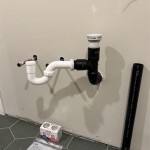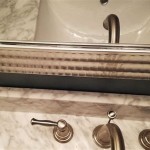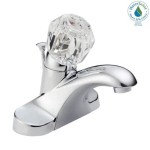Gnats in My Bathroom Sink
Finding small, flying insects near the bathroom sink is a common household annoyance. These pests are often referred to as "sink gnats," though this term can encompass several different species of small flies, including drain flies, fruit flies, and fungus gnats. Accurately identifying the specific type of gnat is crucial for effective removal. This article will explore the common types of gnats found in bathroom sinks, their breeding habits, and strategies for eliminating infestations.
Drain Flies: Drain flies, also known as moth flies, are perhaps the most common culprit when it comes to bathroom sink infestations. They are small, fuzzy, dark-colored flies, typically measuring around 1/8 inch long. Their wings are large in proportion to their bodies, giving them a moth-like appearance. Drain flies breed in the organic matter that accumulates in drains, including hair, soap scum, and other debris. The larvae feed on this material, developing into adult flies within a week or two.
Fruit Flies: While more commonly associated with kitchens, fruit flies can also infest bathrooms. These small, reddish-brown or tan flies are attracted to fermenting or decaying organic matter. Overripe fruit left on countertops, spilled juice, or even sugary residue in drains can provide a breeding ground for fruit flies. They have a shorter life cycle than drain flies, often completing their development from egg to adult in just a few days.
Fungus Gnats: Fungus gnats are another potential source of bathroom infestations. These small, dark-colored flies are attracted to damp soil and decaying plant matter. Potted plants in the bathroom, particularly those that are overwatered, can provide ideal breeding conditions for fungus gnats. Their larvae primarily feed on fungi and algae that grow in moist environments.
Identifying the Source: The first step in eliminating gnats in the bathroom sink is to identify the specific type of gnat and its breeding source. For drain flies, check the drain for any visible buildup of organic matter. Running water down the drain may not dislodge these deposits. For fruit flies, inspect the bathroom for any potential food sources, including overripe fruit, discarded food containers, or sticky spills. If fungus gnats are suspected, examine any potted plants for signs of overwatering or decaying plant material.
Eliminating Drain Flies: Cleaning the drain is essential for eliminating drain flies. A pipe brush can be used to scrub the inside of the drainpipe, removing any accumulated grime and organic matter. Pouring boiling water down the drain can also help to kill larvae and eggs. Commercial drain cleaners can be used, but always follow the manufacturer's instructions carefully and ensure adequate ventilation. Baking soda and vinegar can also be used as a natural drain cleaner.
Eliminating Fruit Flies: Removing any potential food sources is key to controlling fruit flies. Dispose of overripe fruit, clean up any spills or sticky residues, and ensure that trash cans are emptied regularly. Fruit fly traps, both commercial and homemade versions using apple cider vinegar, can be effective in capturing adult flies. Maintaining good sanitation practices and promptly addressing any spills or decaying organic matter will help to prevent future infestations.
Eliminating Fungus Gnats: Allowing the topsoil of potted plants to dry out between waterings can help to discourage fungus gnat breeding. Avoid overwatering plants and ensure that pots have adequate drainage. Sticky traps can be used to capture adult fungus gnats. Insecticidal soap or neem oil can be applied to the soil to control larvae, but always follow product instructions carefully.
Preventing Future Infestations: Regular cleaning and proper sanitation are crucial for preventing future gnat infestations. Clean the bathroom sink and surrounding area regularly, paying particular attention to removing any organic debris. Ensure that drains are clear and free of buildup. Avoid leaving standing water in any containers. For potted plants, ensure proper drainage and avoid overwatering. Promptly address any spills or decaying organic matter. By implementing these preventative measures, homeowners can significantly reduce the likelihood of gnat infestations in their bathroom sinks.
Professional Pest Control: If infestations persist despite implementing these control measures, seeking professional pest control services may be necessary. A qualified pest control professional can identify the specific type of gnat, locate breeding sites, and implement effective control strategies tailored to the specific situation.
Further Investigation: Local extension offices and university entomology departments can provide valuable resources and information on identifying and controlling various types of gnats and other household pests. Consulting these resources can offer further insights and guidance for effectively managing gnat infestations.
How To Get Rid Of Gnats Drain Flies Fruit And Fungus

The Simple Trick To Stop Pesky Gnats From Taking Over Your Drains
Jab Plumbing Solutions Blog Blocked Drain Plumbers

5 Easy Ways To Get Rid Of Drain Flies Fast

Fruit Flies In The Bathroom Get Rid Of Them Michael S Plumbing Orlando

How To Rid Of Drain Flies Forbes Home

How To Get Rid Of Drain Flies Rt Olson Plumbing

How To Get Rid Of Drain Flies Moth And Prevent An Infestation Pest Defence
How To Get Rid Of Gnats In A Bathroom Quora

What Are Those Little Dark Colored Flies That Come Out Of My Bathroom Sink Uf Ifas Entomology And Nematology Department
Related Posts







